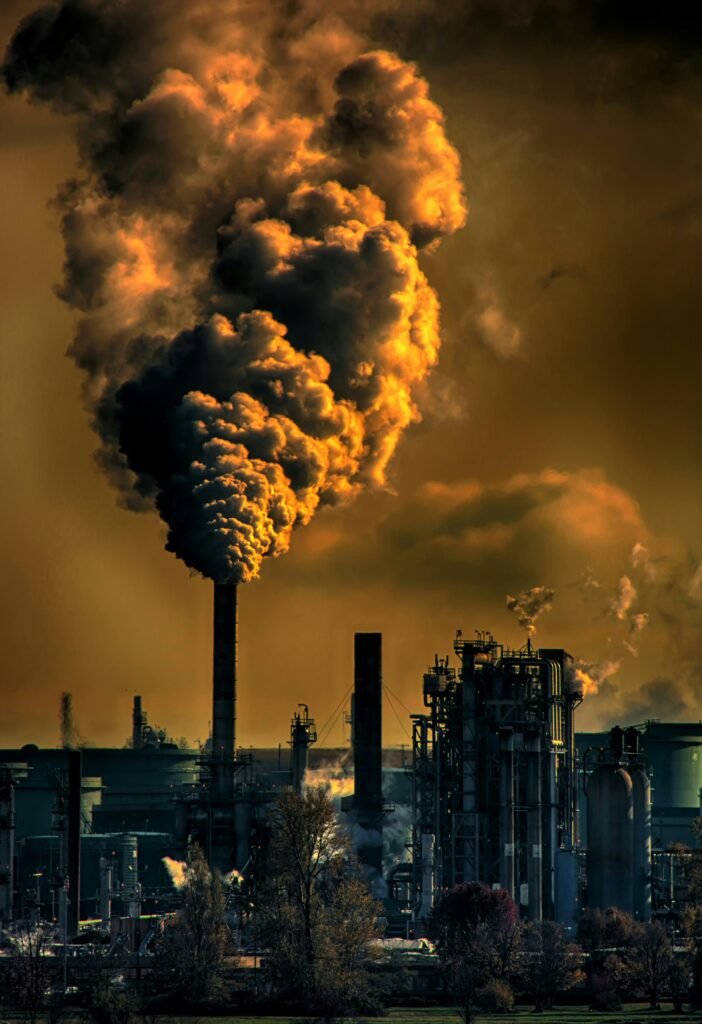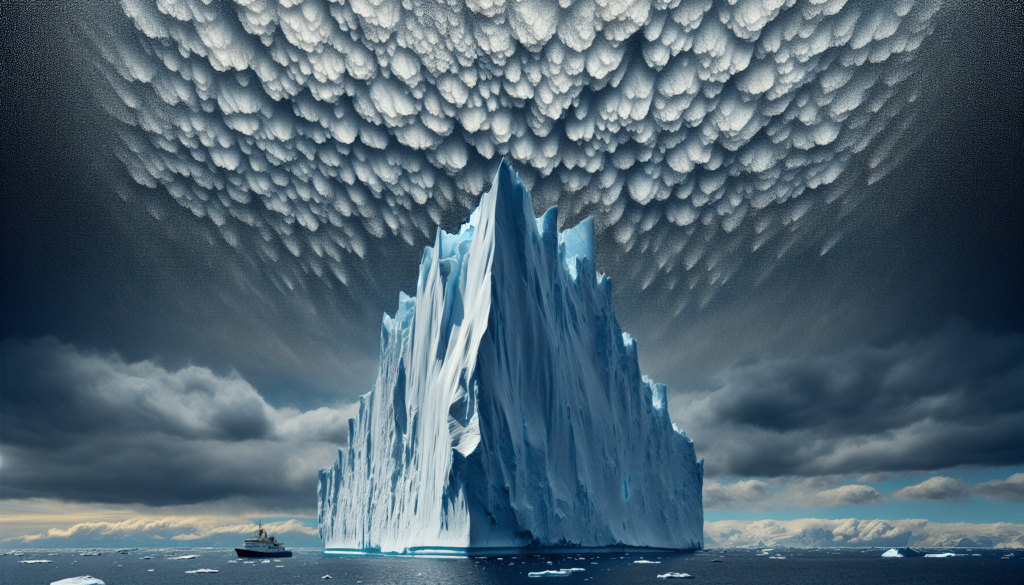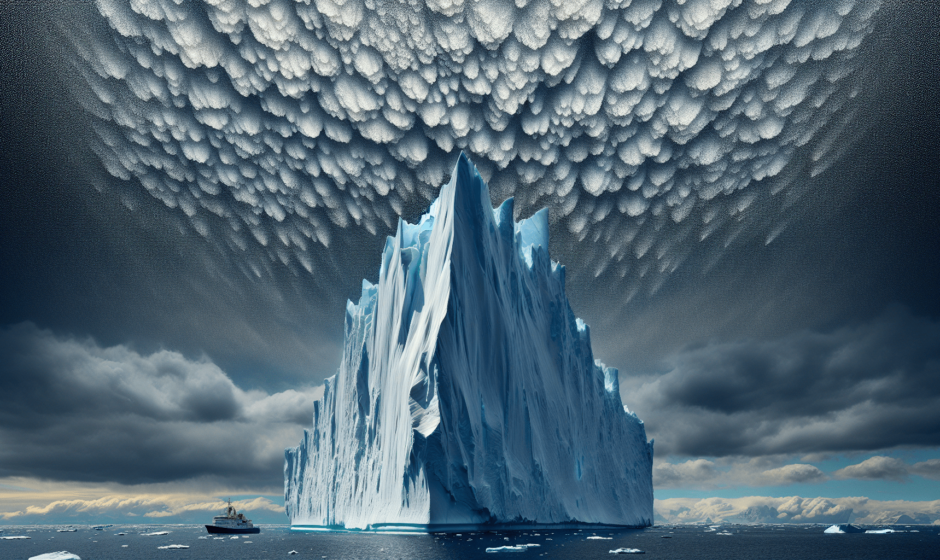How Aerosols Affect ice sheet melting
How do aerosols in the stratosphere potentially reduce ice sheet melting?

Overview of Aerosols and Ice Sheet Melting
Aerosols are tiny particles suspended in the atmosphere, and they have the potential to affect the melting of ice sheets. When these aerosols interact with ice, they can alter the rate at which the ice melts. Understanding this interaction is crucial for predicting the impacts of climate change on ice sheet dynamics.
Role of Aerosols in Climate Change
Aerosols can influence climate change in various ways. They can either cool or warm the atmosphere, depending on their composition and location. In the stratosphere, aerosols can reflect sunlight back into space, leading to a cooling effect on the Earth’s surface. This cooling effect can potentially slow down the rate at which ice sheets melt.
Impact on Ice Sheet Albedo
Albedo refers to the ability of a surface to reflect sunlight. When aerosols interact with ice sheets, they can change the albedo of the ice. Bright aerosols, such as sulfates, can increase the reflectivity of ice, causing more sunlight to be reflected back into space. This reflection of sunlight reduces the amount of heat absorbed by the ice, thereby slowing down the melting process.
Mechanisms of Aerosol-Ice Interactions
The interaction between aerosols and ice sheets is complex and involves various mechanisms. Understanding these mechanisms is essential for predicting how aerosols can affect ice sheet melting.
Direct Impact of Aerosols
Aerosols can directly affect ice sheet melting by altering the surface properties of the ice. For example, black carbon aerosols can darken the surface of the ice, causing it to absorb more sunlight and melt faster. On the other hand, bright aerosols can increase the reflectivity of the ice, leading to slower melting rates.
Indirect Impact of Aerosols
In addition to their direct effects, aerosols can also have indirect impacts on ice sheet melting. Aerosols can alter cloud formation and precipitation patterns, which can in turn affect the rate at which ice sheets melt. For example, aerosols can influence the formation of clouds, which can either trap heat and accelerate melting or reflect sunlight and slow down melting.
Feedback Mechanisms
There are also feedback mechanisms at play between aerosols and ice sheets. For instance, as ice sheets melt, they release more water vapor into the atmosphere, which can interact with aerosols and influence their properties. This interaction can create a feedback loop that either amplifies or dampens the effects of aerosols on ice sheet melting.

Studying the Aerosol-Ice Connection
Scientists use various methods to study the connection between aerosols and ice sheets. These methods help researchers understand how aerosols affect ice sheet melting and improve predictions of future climate change impacts.
Satellite Observations
Satellite observations provide valuable data on aerosols and their interactions with ice sheets. Researchers use satellites to track aerosol concentrations, distribution, and movement across the atmosphere. This data helps scientists analyze how aerosols influence ice sheet melting on a global scale.
Climate Models
Climate models are essential tools for simulating the interactions between aerosols and ice sheets. These models allow researchers to study how changes in aerosol concentrations and properties can impact ice sheet dynamics. By running simulations with different scenarios, scientists can make predictions about the future of ice sheet melting.
Field Studies
Field studies involve collecting direct measurements of aerosols and ice sheet properties in specific locations. Researchers use instruments such as lidars and spectrometers to study the physical and chemical properties of aerosols and ice. These measurements provide valuable insights into the local effects of aerosols on ice sheet melting.

Implications for Climate Change
Understanding the role of aerosols in ice sheet melting has significant implications for climate change mitigation and adaptation efforts. By studying this connection, scientists can better predict how ice sheets will respond to changing aerosol concentrations and climate conditions.
Policy and Decision-Making
Insights into the aerosol-ice connection can inform policy decisions related to climate change. Policymakers can use this knowledge to develop strategies for reducing aerosol emissions and mitigating the impacts of ice sheet melting. By taking action to limit aerosol pollution, governments can help slow down the rate of ice sheet melting and reduce the risks associated with sea level rise.
Climate Change Adaptation
Understanding the effects of aerosols on ice sheet melting is crucial for climate change adaptation efforts. Communities living in coastal areas can use this knowledge to prepare for potential sea level rise resulting from ice sheet melting. By incorporating this information into adaptation planning, communities can better protect themselves from the impacts of climate change.
Scientific Research
Further research into the connection between aerosols and ice sheets is essential for advancing scientific knowledge on climate change. By studying how aerosols influence ice sheet dynamics, scientists can improve climate models and predictions. This research can also help identify new opportunities for mitigating the impacts of aerosols on ice sheet melting.
In conclusion, the interaction between aerosols and ice sheets plays a critical role in shaping the future of our planet’s climate. By studying this connection and understanding how aerosols affect ice sheet melting, scientists can improve our ability to predict and mitigate the impacts of climate change. Through continued research and collaboration, we can work towards a more sustainable and resilient future for our planet.





